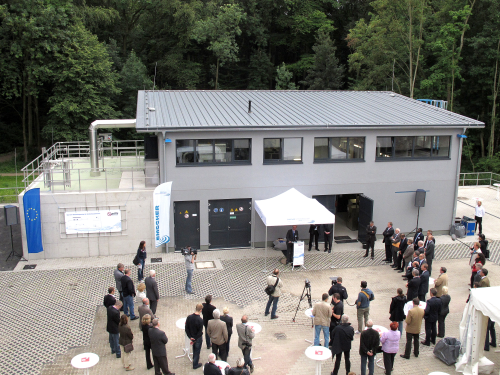
The chemical industry faces many economical and environmental challenges. Not only is it necessary for a chemical plant to become more cost-effective, but the environmental regulations that it must meet are also becoming increasingly stringent. Membrane bioreactor (MBR) technology with its high quality effluent has proved to be a good fit for wastewater plants in the chemical industry. The MBR operation at the Marienhospital in Gelsenkirchen, Germany is a good example of a wastewater plant employing MBR technology because of high effluent quality requirements.
Hospital wastewater
The wastewater plant at Marienhospital in Gelsenkirchen was first put into operation in July 2011. It is one of the first European wastewater treatment plants that focuses on the elimination of micro pollutants, as well as the purification of the wastewater from the hospital. The plant was built in the context of an European Union-project called ‘PILLS’ (Pharmaceutical Input and Elimination from Local Sources) under the aegis of the Emschergenossenschaft. The project´s goal is to eliminate micro pollutants in the sewage water on site, which particularly in hospitals occur as residues from pharmaceuticals and radio-opaque substances. Around 75,000 patients are treated every year at the Marienhospital by approximately 1,200 members of staff. This results in up to 200 m3/day of effluent. Up to now, this effluent has been discharged into the nearby Schwarzbach river through municipal canals. This creek currently still serves as an open sewage water drain outlet, but is targeted to be ‘returned to nature’ and operated effluent-free in the course of the conversion. Amongst other streams, it will also absorb the purified water from the new clarification plant. As well as mechanical and biological clarification, this new wastewater treatment plant encompasses a variety of treatment processes, such as an ultrafiltration with submerged modules (MBR technology) and ozonisation, as well as an activated carbon filtration.
Installation
For the ultrafiltration, three submerged BC400 modules from MICRODYN-NADIR were installed. In total these modules have a membrane area of 1,200 m2 through which the biologically purified sewage water is removed from the aeration tank. The ultrafiltration permeate - now free of particles and bacteria – is then subject to ozonisation and an activated carbon filtration. Ozone, a strong oxidiser, initiates the separation of the micro pollutants in solution and converts them into nonhazardous substances. In addition, the micro pollutants are absorbed by pulverised activated carbon, which is then removed from the water along with the trace substances.



